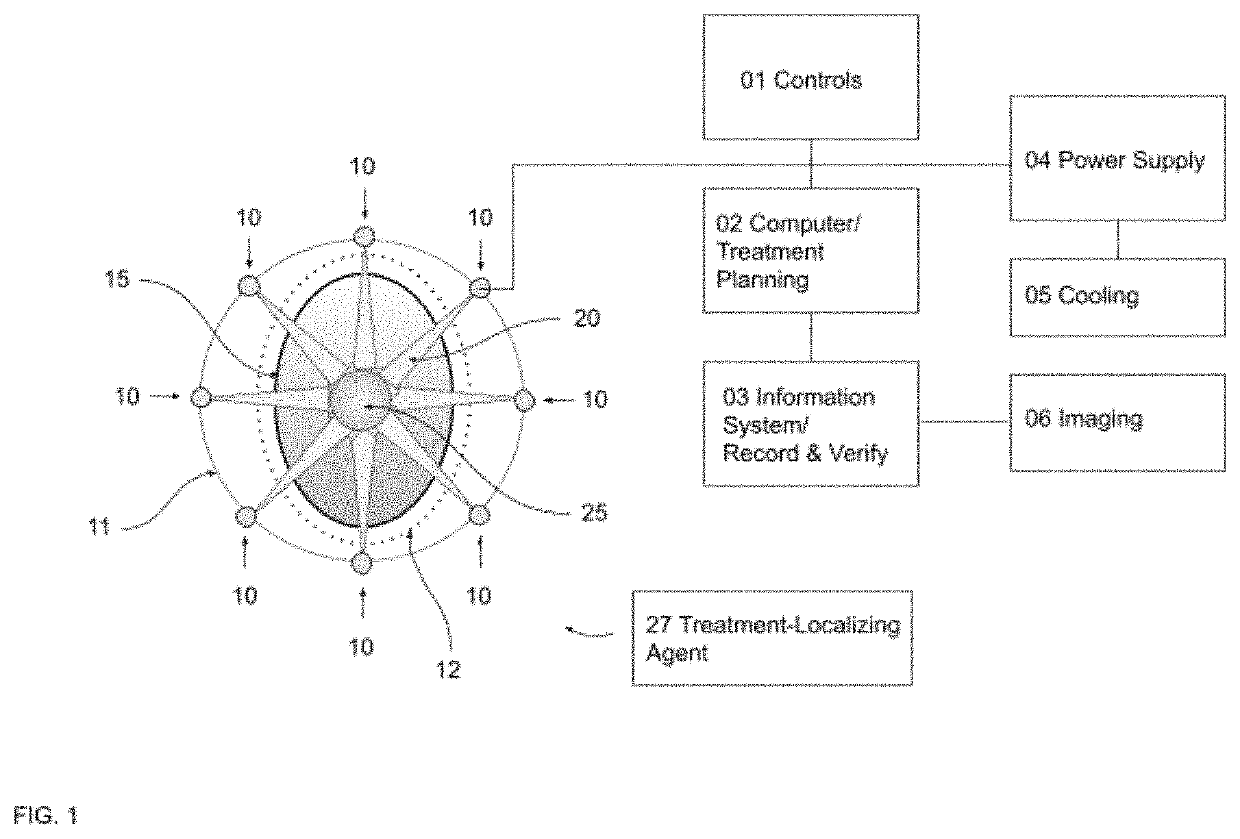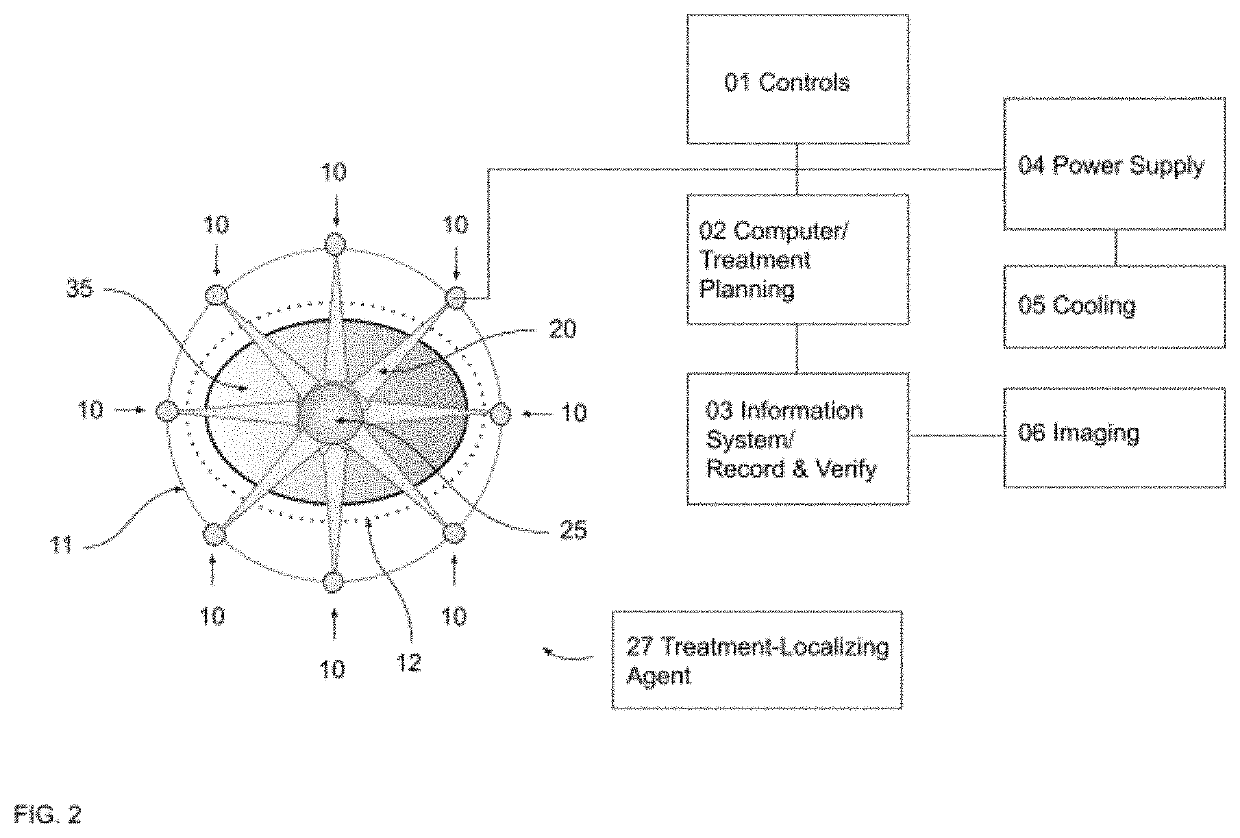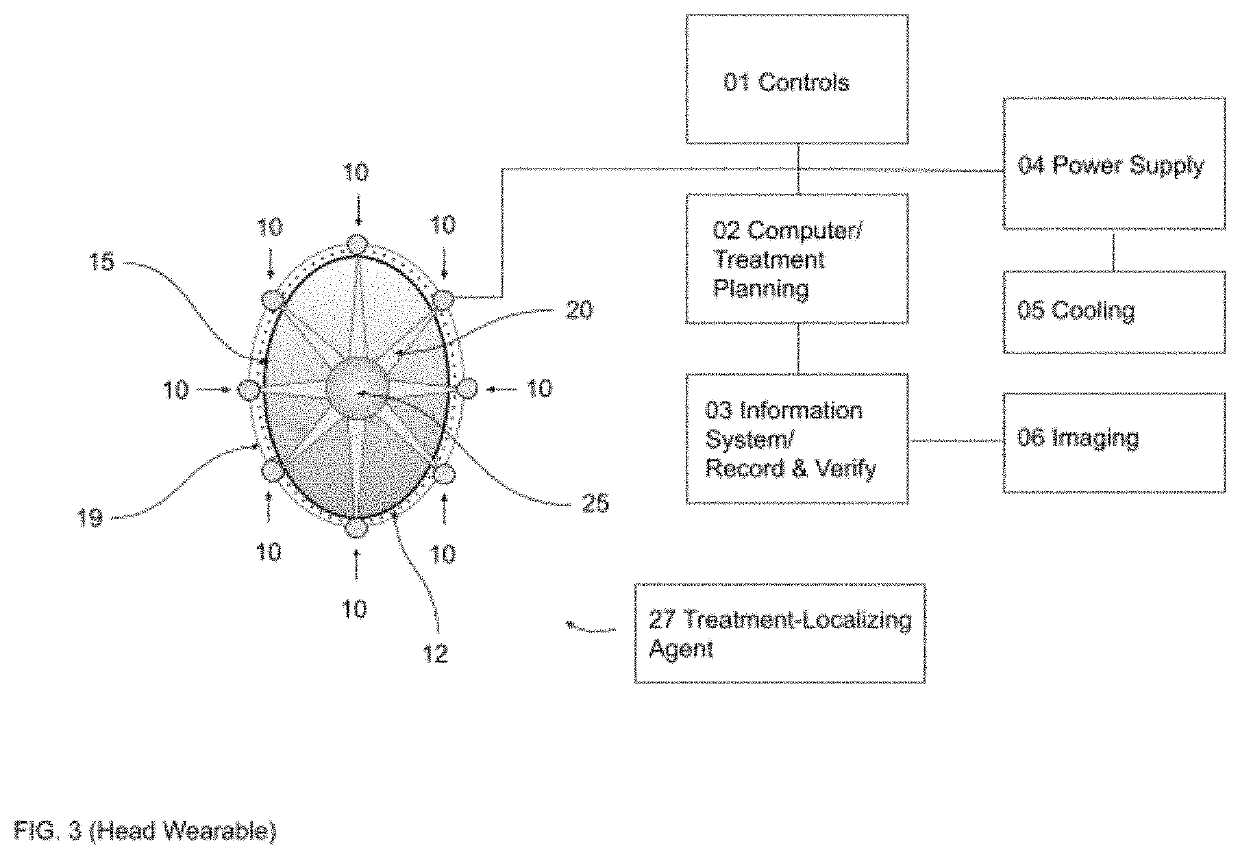Non-Invasive Convergent Heating Treatment
a convergent heating and non-invasive technology, applied in the field of medical therapy and imaging of lesions, can solve the problems of toxic proteins, slow sleep disturbance, animal models lacking the full range of ad pathophysiology, etc., and achieve the effects of enhancing uptake of chemotherapy and cell death, and increasing cell membrane permeability
- Summary
- Abstract
- Description
- Claims
- Application Information
AI Technical Summary
Benefits of technology
Problems solved by technology
Method used
Image
Examples
Embodiment Construction
[0039]The construction and usage of embodiments will become readily apparent from consideration of the following specification as illustrated in the accompanying drawings, in which like reference numerals designate like parts, and wherein:
[0040]Local and Regional Energy Deposition. In the case of Alzhiemer's disease or other pathologies of the CNS, there are several therapeutic, ameliorating approaches that can be employed around the head 15 as shown in FIG. 1, or body 35 as shown in FIG. 2 with non-ionizing energy 20 of electromagnetic waves in the 300 MHz-300 GHz microwave range, or 300 kHz-300 MHz radio range, or mechanical sound waves in the 0.1 MHz-300 MHz ultrasonic range, including cavitation and boiling histotripsy. In the present invention, non-invasive, i.e., delivered without employing a device or mechanism to cut, puncture or traumatically penetrate the skin, and without an open surgical procedure, external energy 20 can be delivered to a pathological region 25 of the bo...
PUM
 Login to View More
Login to View More Abstract
Description
Claims
Application Information
 Login to View More
Login to View More - R&D
- Intellectual Property
- Life Sciences
- Materials
- Tech Scout
- Unparalleled Data Quality
- Higher Quality Content
- 60% Fewer Hallucinations
Browse by: Latest US Patents, China's latest patents, Technical Efficacy Thesaurus, Application Domain, Technology Topic, Popular Technical Reports.
© 2025 PatSnap. All rights reserved.Legal|Privacy policy|Modern Slavery Act Transparency Statement|Sitemap|About US| Contact US: help@patsnap.com



